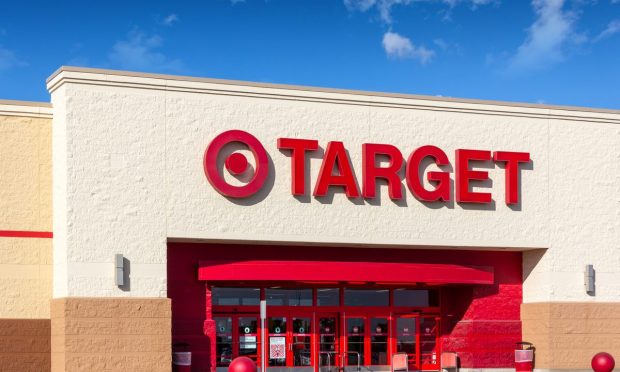Target Sees Resilient Consumers, Spending Splurges as It Races to Right-Size Inventory

In a land where managing Wall Street expectations is a make-or-break endeavor, Target was handed the equivalent of a failing grade Wednesday morning (Mat 18), as stunned investors pummeled the retailer’s stock by 25% after it unveiled an unexpected 40% drop in earnings.
At the same time, the Minnesota-based operator of 1,900 stores and an eCommerce and delivery platform said its relationship with consumers has never been stronger as reflected by gains in its in-store and digital sales.
The resulting chasm between Target’s bottom-line bust and 20-quarter string of same-store sales growth was the result of “unexpectedly high costs” that more than devoured any of the retailer’s gains in sales, digital traffic and visitors.
“Our first-quarter gross margin rate was well below our expectations, reflecting a combination of factors that proved to be very different than expected, driven by a rapidly shifting macro backdrop and changing consumer behavior,” Target CEO Brian Cornell said on the company’s Q1 earnings call.
Sizing up the Shift
Not unlike Walmart’s disappointment Tuesday (May 17), Cornell blamed much higher than expected freight and transportation costs and a more dramatic change in sales mix than anticipated for a surge in inventory which he said put additional strain on an already stressed-out supply chain.
Read more: Walmart Sees Demand Shift for Low-Priced Bacon and High-Ticket Game Consoles
While the retailer is committed to right-sizing its inventory and restoring its profitable sales growth via additional price increases, Target’s long-term optimism stands in stark contrast to its slumping stock price.
In short, while Cornell said Target anticipated some shift from goods to services in the wake of last year’s stimulus checks, the magnitude of the actual shift caught it by surprise and left it with too many bulky appliances, TVs and outdoor furniture and nowhere to store them cheaply.
“Nevertheless, we’re still seeing healthy overall spending by our guests,” Cornell observed, noting the evolving change of habits as well as what he called “meaningful spending surges” around holidays, including Easter in April and Mother’s Day two weeks ago.
“The encouraging longer-term growth trends demonstrate the continued resilience of the American consumer and the trust they place in Target, even as they face multiple challenges,” Cornell said. “Guests are focused on getting back to many of the habits and behaviors they suspended during the heart of the pandemic, including travel, out-of-home activities, and social gatherings, and importantly, even as the mix of what they’re buying continues to evolve, their spending capacity continues to benefit from elevated saving rates, high employment and healthy wage growth.”
Pockets of Strength
Although Target’s Q1 sales were described as balanced, with both in-store and digital comp sales growing by about 3%, the company said it saw stronger results in a few key areas, including strong growth and market share gains in food and beverage, as well as double-digit comp growth in beauty, which it said reflected ongoing work to enhance presentation, assortment and service via its new and expanding partnership with Ulta Beauty.
See more: Target, Ulta to Make ‘Prestige Beauty’ More Accessible With Shop-in-Shops
“The results of this partnership have exceeded our initial expectations, driving higher productivity and sales through both beauty areas and adjacent categories in the stores where we’ve added the Ulta Beauty experience,” Cornell said.
While acknowledging that there is still plenty of work to do, as well as the wide-ranging response to economic uncertainty being experienced by the 20 million consumers that visit its stores each week, Target kept its full-year forecast for low- to mid-single digit revenue growth intact but warned that operating margins would be in a wide range and single digits for the foreseeable future.
